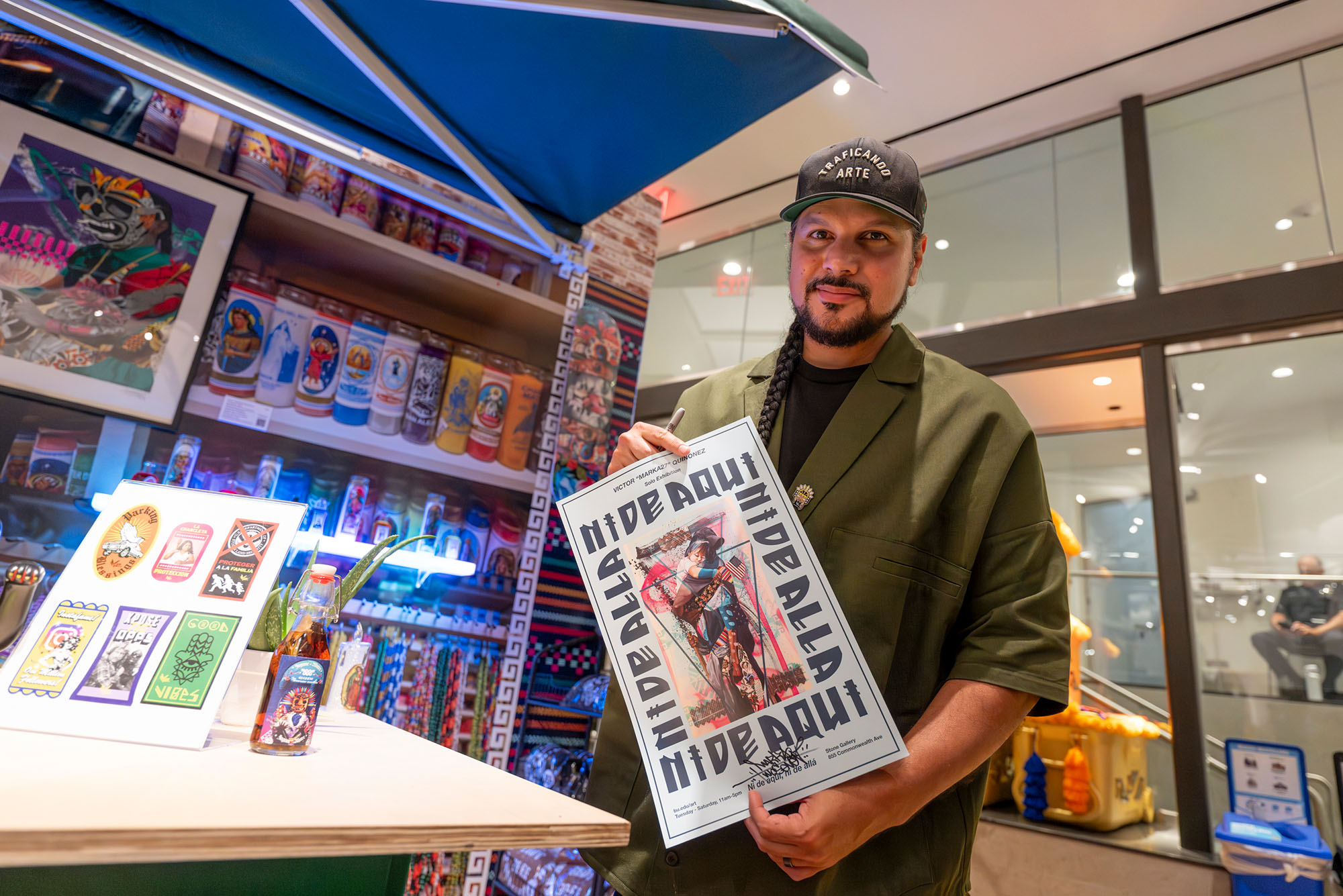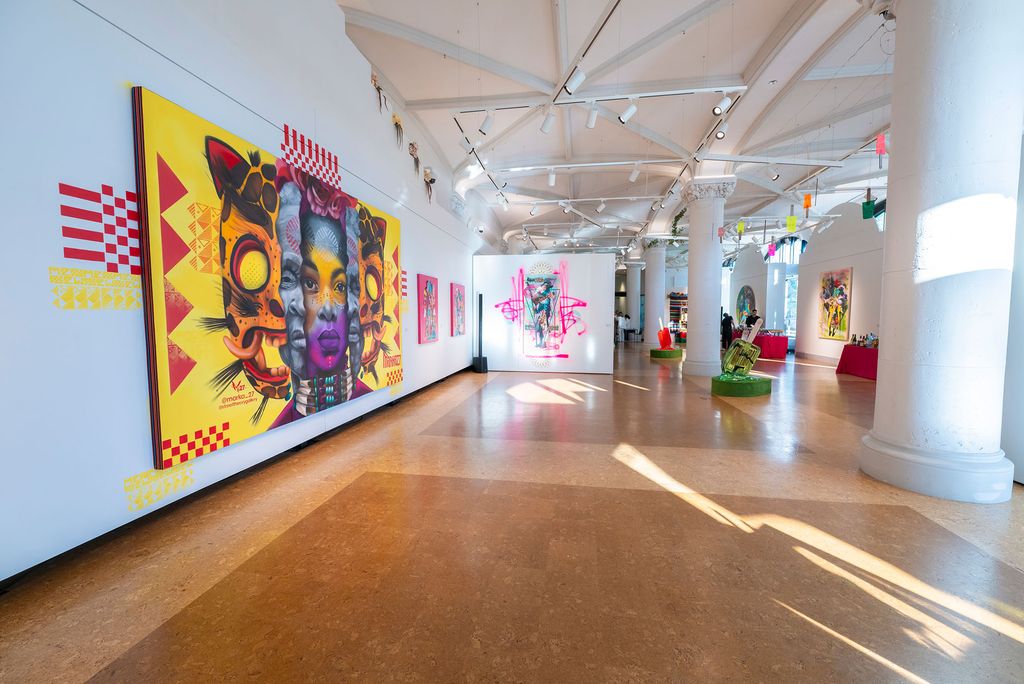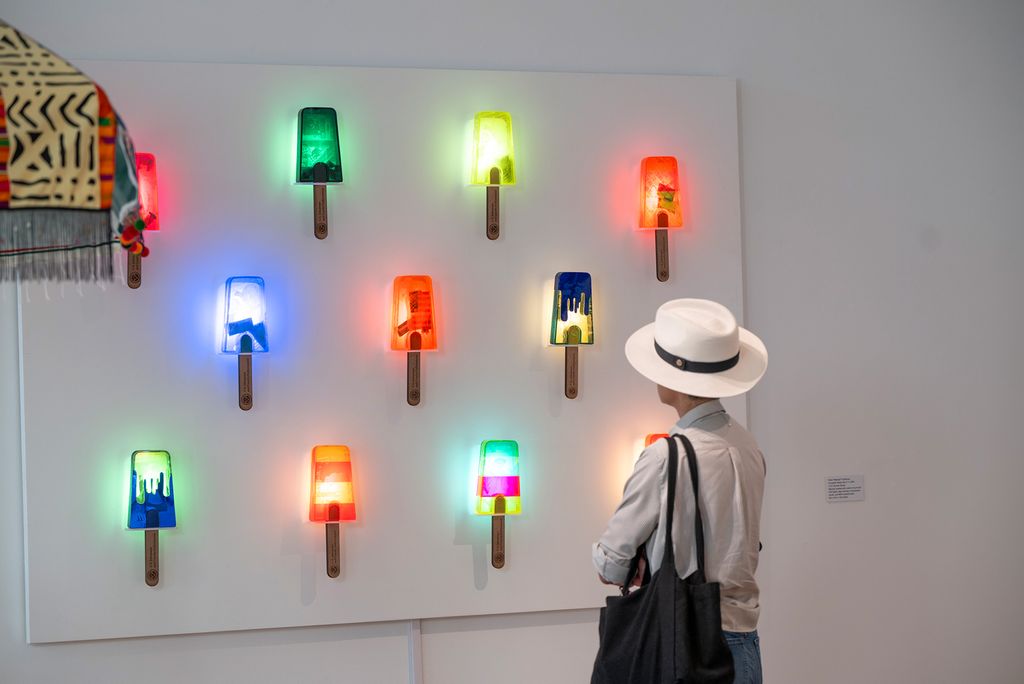Stone Gallery Show Explores What It Means to Be Not from Here, Not from There
Works by acclaimed artist, Victor "Marka27" Quiñonez, are on view in Ni de Aquí, Ni de Alla, at BU's Faye G., Jo, and James Stone Gallery through December 10, inviting viewers on a journey of riotous colors, media, and narrative

Victor “Marka27” Quiñonez, with a signed poster for the exhibition, at BU’s Faye G., Jo, and James Stone Gallery reception for Ni de Aquí, Ni de Alla, September 27.
Stone Gallery Show Explores What It Means to Be Not from Here, Not from There
At turns joyous and powerful, Ni de Aquí, Ni de Alla is a collision of media, identities, narratives
This article was originally published in BU Today on October 15, 2025. By Sophie Yarin. Photos by Melissa Ostrow
EXCERPT
What does it mean to be not from here and not from there? This conundrum—the intersection of opposing cultures, languages, and experiences—is at the heart of Victor Quiñonez’s creative vision. Works by the multihyphenate artist, known by the moniker Marka27, are on view at Ni de Aquí, Ni de Alla, at Boston University’s Faye G., Jo, and James Stone Gallery through December 10, inviting viewers on a journey of riotous colors, media, and narrative.
“Ni de Aquí has been three years in the making, and seeing it finally installed is beyond what I imagined,” says Lissa Cramer (MET’18), director of BU Art Galleries. “Victor’s attention to detail is remarkable. He’s so intentional with every choice. The show is stunning, and he’s an absolute dream collaborator.”
Born in Ciudad Juárez, Mexico, and raised in East Dallas, Texas, Quiñonez began his artistic career as a graffiti artist, for which he was incarcerated. The aesthetics of street culture—itself a cacophony of sights, sounds, histories, and experiences—has never left his work, which can be seen from Boston to Denver to the new World Trade Center complex in New York. Now an award-winning exhibiting artist, designer, gallerist, and community activist, he maintains a connection to street aesthetics by incorporating spray paint, mural, and references to urban life in his art.



Quiñonez refers to his distinct visual imprint as a “neo-Indigenous” style. “Neo-Indigenous came from wanting to pay homage to my culture, wishing to incorporate images of Mayas, Aztecs, and more, while recreating them in a way—hence, they are translatable to our times,” he told Art Currently. “When I moved from Texas to the East Coast, I was around the Afro-Latino communities. This encounter inspired me to incorporate people from the Caribbean, the Dominican Republic, and everywhere, because I want to decolonize the thoughts regarding skin color.”
Through his work, Quiñonez invites viewers into a vibrant space where heritage and modernity coexist. No stranger to making space for street art within the white-wall gallery, he believes that seeming contradiction has always had a place in Mexican artistic tradition. He draws inspiration from the Mexican Masters—Diego Rivera, David Alfaro Siqueiros, and José Clemente Orozco—artists whose place in the canon is cemented by their blend of folk aesthetics and modern techniques, the international art world, and the local street corner.
read the full article in bu today

Ni de Aquí, Ni de Allá (Not From Here, Not From There)
For visitors, this exhibition offers both sanctuary and provocation, challenging viewers to reflect on the humanitarian and social issues shaping the immigrant experience and inspiring a sense of pride, empathy, and action.